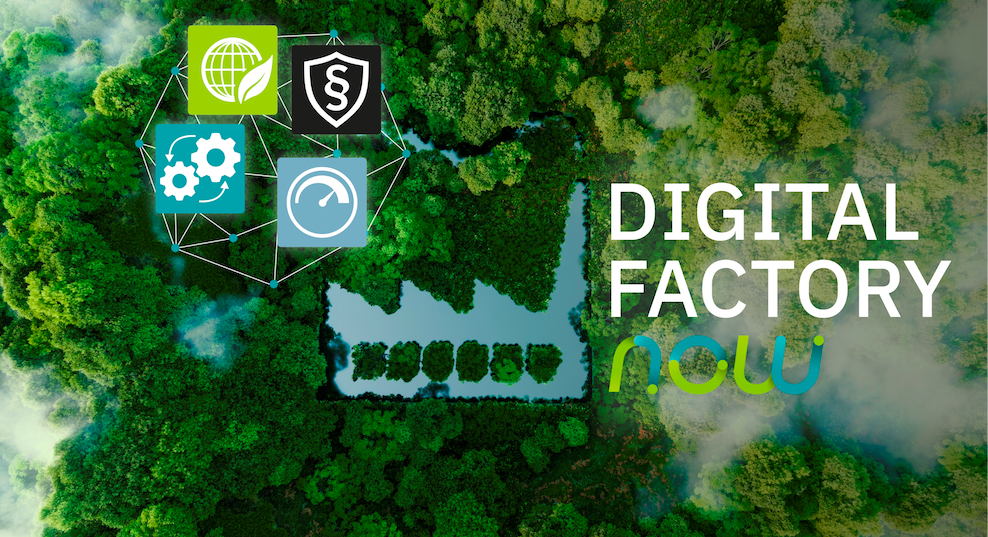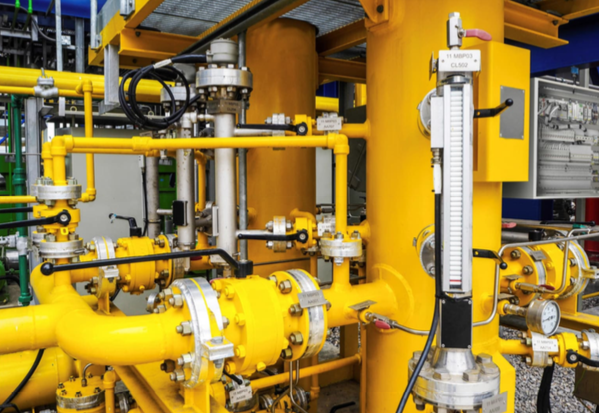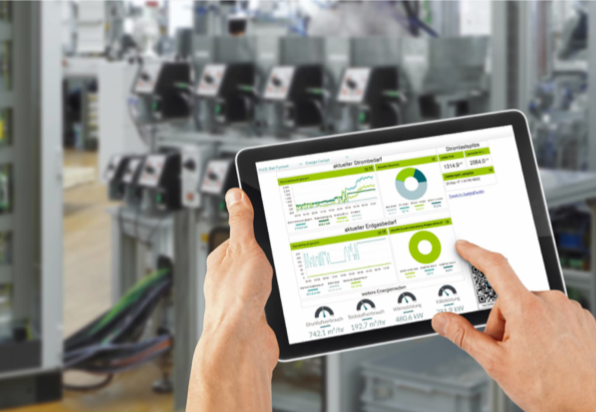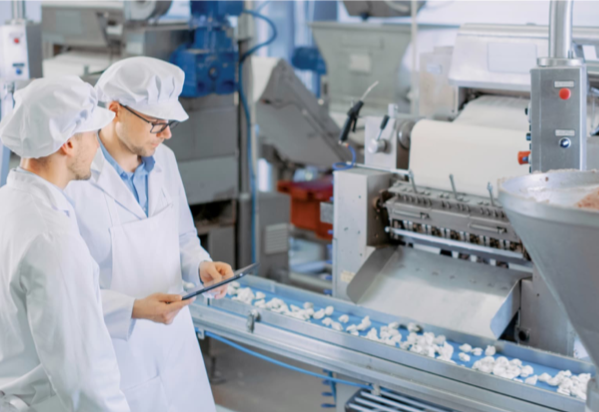The path to sustainable food production: Smart utility metering and optimization

Smart utility metering and optimization
Markus Kick, International Business Development Manager, Phoenix Contact Electronics, Bad Pyrmont, Germany
To successfully implement long-term and sustainable climate strategies, all areas of a manufacturing company - from the raw materials warehouse and the batch house, through individual production and the packaging and warehouse area, all the way to the building itself - must be considered. If this is not done, attempts to reduce greenhouse gases and to comply with directives on the environmental and materiality analysis of a company often fail.

(Image source: petrmalinak@shutterstock.com)
To reduce, optimize, and balance resource outlay, it is necessary for the operators to be able to quickly and easily record the utility consumption of the individual production lines and processing areas right down to the installed sensor, both locally and globally. Different liquid and gaseous utility are used for food production in the existing systems of this hybrid industry - for example, natural gas/air mixtures for heat treatment in the thermal processes in baking and melting processes and in cooling processes. Here, every single cubic meter of natural gas and every liter of water has to be used not just efficiently, but also intelligently and in a manner that conserves resources. Such a methodology must be possible in a continually expanding and interoperable networked production in which it does not matter whether the system is 20 years old or older or whether a new mixing, cutting, or stirring unit with a state-of-the-art communication system - for example, a process and control system - is added later. Equally, it should not matter whether a discrete or process engineering area within the factory is involved.

(Image source: Gorodenkoff@shutterstock.com)
Generic, scalable, and modular turnkey system
The All Electric Society is the solution for a carbon-neutral world. This vision of the future describes a world in which electrical energy generated from renewable sources is the primary type of energy and is available in sufficient quantities, is fully economical, and is completely carbon-neutral. Industry is taking on a key role in achieving the strived-for climate neutrality, because the solutions being brought forward are enabling the electrification of all other sectors, including building, mobility, energy, and infrastructure. So that the globally important food industry - one of the largest industrial sectors - can achieve the goal of net-zero emissions simply and economically, Phoenix Contact has created the ‘Digital Factory now’ concept, taking the framework conditions of the All Electric Society into account. This concept provides the industrial sector with a generic, scalable, and modular turnkey system that meets the challenges of digitalization, efficiency, and sustainability in equal measure.
As with many companies in the food industry, the electronics manufacturer Phoenix Contact has the clear goal of operating climate-neutrally by 2030 throughout the entire value-added chain. In terms of the system and application development of the company, this means that the solutions that are provided to users for increasing efficiency in a sustainable production system (among other reasons) are proven beforehand in their own factories and their networks. This is already being done industry-independently and openly in the Digital Factory at the Bad Pyrmont location, for example. This analysis also resulted in the use case utility metering and reporting with our own Proficloud.io cloud solution and the open PLCnext Technology ecosystem’.

Due to the expansion of the directives on sustainable materiality analysis and social responsibility of the economy, for example to include the CSR definition (Corporate Social Responsibility), the entire industry must act. According to the Statistischen Jahrbuch 2019 (Statistics Annual 2019 – German only – destatis.de), Statistics | Eurostat (europa.eu), more than 45,000 manufacturing companies in Germany and over two million in Europe are affected by this. If those responsible want to manage their operations in an economically desirable, smart, and digital future, it is essential to consider and analyze a factory holistically.
Globally useable solution for all supply media
In particular due to the current economic and global political situation regarding resource scarcity, Phoenix Contact has created a modular digitalization and open solution concept in the context of the ‘Digital Factory now’. This includes, among other solutions, ready-made as well as individual control cabinet solutions in accordance with the tool-box principle for every production environment, including potentially explosive areas. The concept can be rolled out via the in-house Proficloud.io global cloud system for one single factory or numerous factories worldwide. In this concept, it does not matter whether natural gas, water, nitrogen, heavy oil, electrical energy, or other utilities are to be recorded. The PLCnext-based IIoT framework enables the seamless control, visualization, and evaluation of consumption and mixing ratios. Furthermore, data can be exchanged securely, openly, and without additional data silos between the field level and the superordinate systems - for example, Enterprise Resource Planning (ERP), Manufacturing Execution System (MES), Distributed Control System (DCS), and the cloud.
Right now, these properties are being used by the operators of natural gas-air heated melting and baking furnaces. The all-important combustion ratio is optimized in parallel in the inventory process with only minimally invasive adjustments, without interfering with the stations, machines, or systems in the CE process. Downtimes are therefore excluded, and expensive external installation costs are avoided. Through the consistent use of free, open machine learning apps via the digital PLCnext Store marketplace, status-based monitoring and diagnostics for each sensor can be integrated into the self-learning system or retrofitted. In this context, it does not matter whether differential pressure transmitters, thermocouples in the oven or in the natural gas system, or the quantity transmitter in the air supply are under consideration. With just a small amount of investment, an economical, sustainable carbon footprint per bread roll, waffle, or cookie can be achieved in parallel operation with high-level time savings and effectiveness increases. In the Phoenix Contact production facility at the Bad Pyrmont location, this approach has increased overall equipment effectiveness by more than 10 percent in just 18 months, based on just three to five percent of the data generated per system. This equates to a factor of 5 compared to conventional automation systems.
Increased protection against unauthorized data access
Energy and utility costs cannot be calculated in the long term. Directives such as the CSR, the rapidly changing climate, and the pressure from large companies in the supply chains are affecting the globally active small and medium-sized operators increasingly often. Furthermore, the European food industry and a large number of other industrial areas are considered to be sectors relevant for network and cybersecurity in accordance with IEC 62443 and the directive on the security of network and information systems, NIS 2.0. This results in higher levels of protection in the classic field and production level through segmented networks. The holistic approach of the ‘Digital Factory now’ concept provides both local and global solutions and support for facing the significant changes on the global market already mentioned, enabling manufacturing companies to position themselves effectively and cost-effectively step-by-step for the coming years.

(Image source: engineer story@shutterstock.com)
“We are the last generation that has a realistic chance of avoiding a climate catastrophe,” says Linus Steinmetz, who has been involved with Fridays for Future since 2018. Particularly for a significant branch of industry such as food manufacturing, Phoenix Contact, with its industry-specific users, can effect a long-term change in the direction of carbon-neutrality. The foundation for this is the high-level innovative power of the All Electric Society mission statement, based on a holistic approach that includes sustainable digitalization in an open automation landscape.
Various component parts of the solution concept
The turnkey hardware, software, and cloud solutions from Phoenix Contact for reducing greenhouse gases contain the following component parts:
- Data, cloud-analysis, and automation apps that can be downloaded from the digital PLCnext Store marketplace:
- An IIoT framework for the data standardization of system and sensor information
- MLnext for cross-platform machine learning
- The Smart Production Library, the standardized open automation library
- The Proficloud.io cloud system for the analysis of and for reporting on utilities and resources, among other things
- Realization of ‘smartified’ connectivity to all relevant interfaces such as Ethernet IP, Profinet, Profibus, Modbus, and HART, as well as to classic analog interfaces and a wide range of further protocols from the field level right through to the information level with the ability to connect to cloud and database systems
- Future-oriented realization in the IEC 62443-certified PLCnext Technology ecosystem through individual control cabinet solutions for:
- Cross-factory utilities metering and control
- Network segmentation for the field level and data storage as tool-box models.
For more information: https://www.phoenixcontact.com/en-ae/industries/digital-factory/digital-factory-now-fields-of-action
Related Posts


